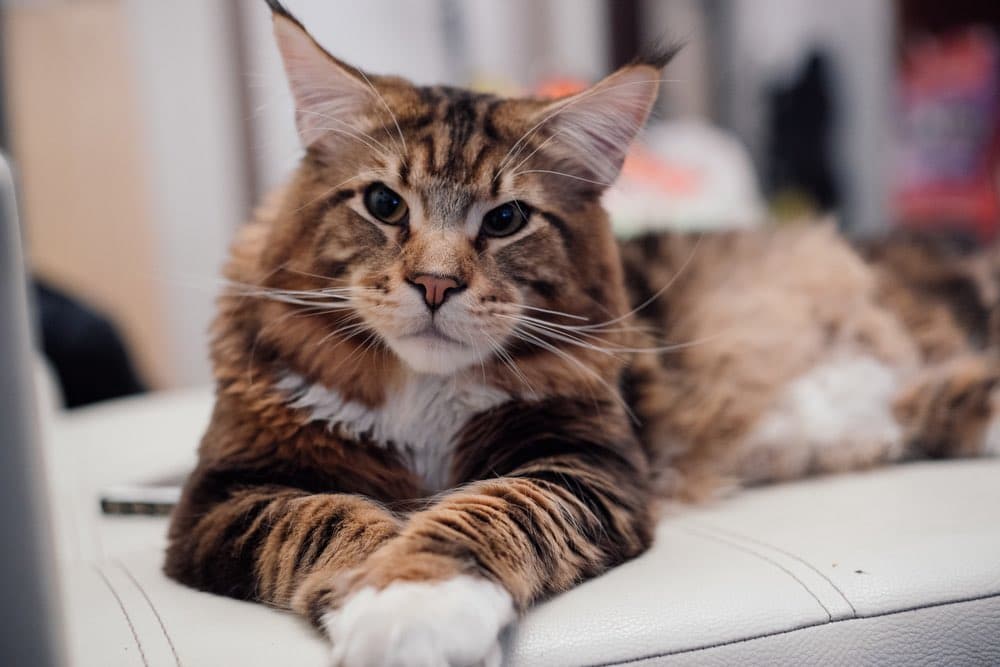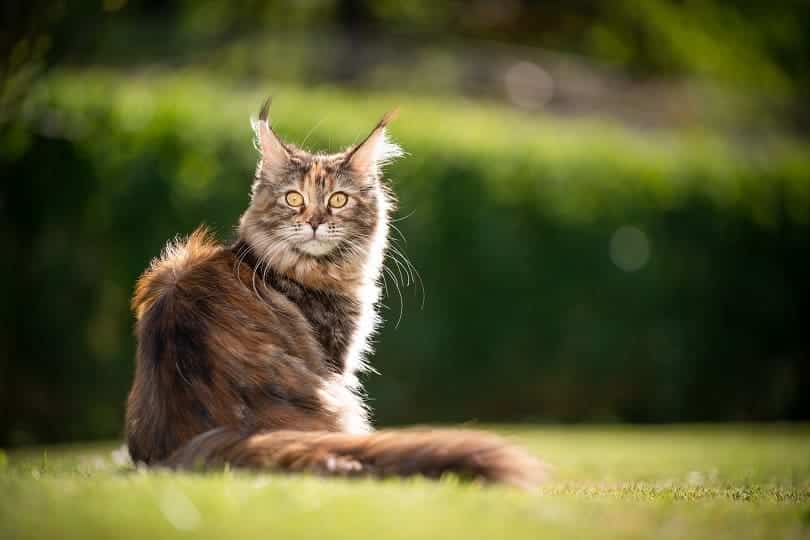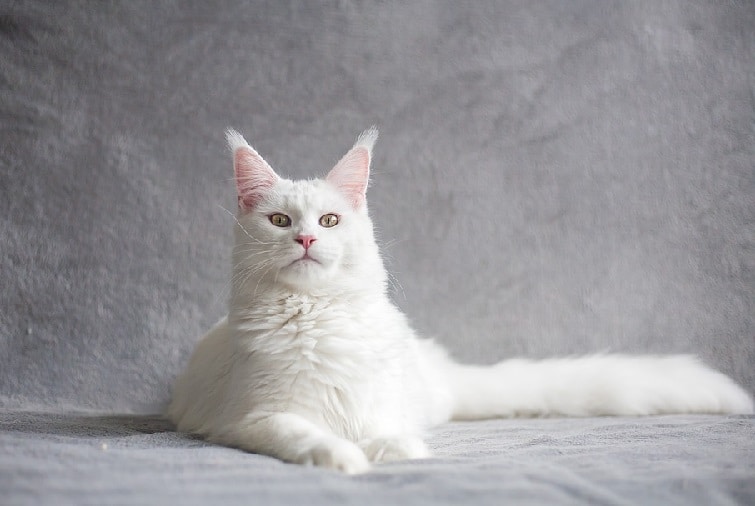One of the most notable qualities of the beautiful Maine Coon is their impressively gorgeous, long coats. Perhaps you have a Maine Coon kitten whose hair looks relatively short for the breed. Or maybe you would like to have a Maine Coon but don’t want to deal with the extra hair that comes with them.
For the record, no purebred Maine Coon cat has short hair. However, if a Maine Coon breeds with another cat, short hair is genetically possible. Even if both parents are mostly Maine Coon, short hair can still appear in the kittens. Let’s uncover the details!
A Little About the Maine Coon

As the name may give away, the Maine Coon came out of Maine in the United States. They are the largest breed of all domesticated cats. One of the primary traits that make the Maine Coon so recognizable is their lush plumes of long hair.
The term “coon” came from their resemblance to the raccoon of North America. Some coat colors and the way the fur grows mimic the raccoon. Of course, Maine Coons aren’t actually related to raccoons; it’s just a portion of their name and looks that they have in common.
Physical Traits of a Maine Coon
A Maine Coon has a vast array of physical possibilities, but they are usually very recognizable because of their lion-like appearance.
| Coat Length: | Medium to long |
| Type of Fur: | Smooth, shaggy |
| Fur Color: | Black, blue, cream, white, red, silver |
| Fur Patterns: | Solid, tabby, tortoiseshell, mackerel, solid, smoke, ticked |
| Grooming Needs: | Regular brushing |
What is the Purpose of a Maine Coons Thick Fur?
Maine Coons have heavy, thick coats. Because they came from Maine, where winters are harsh, their coats protect them from extreme elements. The winter in Maine can have average temperatures as low as 15° Fahrenheit in northern portions of the state.

As kittens and adolescents, Maine Coons might not be as plush as you would think. Some of them, especially around 4 to 6 months, may have thinner hair. However, their coats will fill out as they age.
Classic Maine Coon ear tufts develop when they’re 2 to 3 months old. The lion-like plumes around the neck usually develop by 9 months. But Maine Coons can keep getting fluffier until they reach 4 years old!
Caring for a Maine Coon Coat
To remove dead fur and dander, you should groom your Maine Coon daily or at least three times per week. Because of their coat density, they shed quite a bit. Keeping their hair neatly combed prevents matting and tangling.
While you must perform preventative coat care, it’s a simple process your cat will grow to enjoy. A few gentle passes of a brush can eliminate any problem areas to keep their coat shiny and smooth.
Can You Shave a Maine Coon?
You cannot shave a Maine Coon because their hair protects them from the heat and cold, but you can have their hair trimmed by a groomer. You can find several ideas for Maine Coon haircuts on Pinterest.
Maine Coon vs. Long-Haired Cat
All Maine Coons are long-haired, but not all long-haired cats are Maine Coons. Domestic long-haired cats are less predictable, with different coats, patterns, body shapes, and sizes.
Maine Coons, on the other hand, have a particular set of features. They are fluffy from their ears to their tails. They are the biggest of all domesticated cats, weighing up to 20 pounds! The average housecat only weighs around 10 pounds when fully grown, so you can see a huge difference.
- Persian
- Norwegian Forest
- Angora
- Somali
- Ragdoll
Mixed Breed Maine Coon
It’s possible for a Maine Coon to have short hair if it’s mixed with another breed. If your kitten or cat came from two Maine Coon parents but has short hair, the chances are that one of the parents has another breed in their family tree.
Mixed Maine Coons can have long hair, short hair, or a combination of both. You may see some Maine Coon mixes with the lion’s mane and short hair elsewhere. It’s not uncommon, and it’s interesting to see all of the potential outcomes.
How Do You Know if Your Maine Coon is Purebred?
The only way to know if you have a purebred Maine Coon is to buy from a reputable breeder. Breeders can prove the authenticity of a litter with paperwork and vetting. Anyone with a long-haired litter can claim they have Maine Coon kittens, but unless they can prove it, there is always room for error.
Final Thoughts
So, to wrap things up, even if you don’t have a purebred Maine Coon cat, they can still have luscious long hair. If you have a purebred Maine Coon, you can trim, cut, and style their hair to your liking. However, naturally occurring short-haired Maine Coons don’t exist. But what would a Maine Coon be without their elegantly flowy coats?
Featured Image Credit: Kanashi, Pixabay











